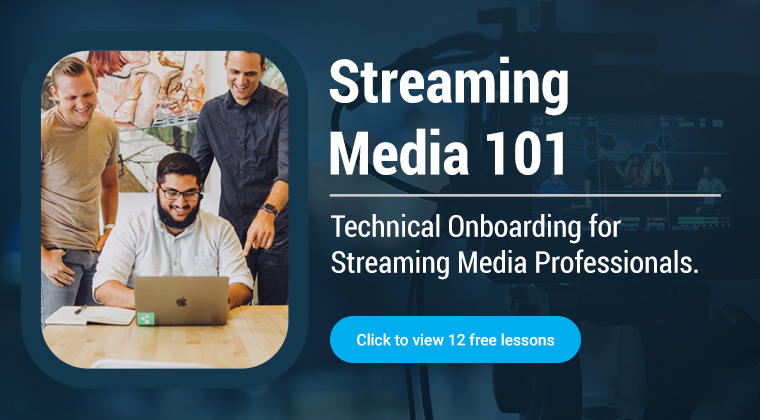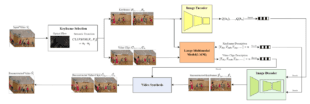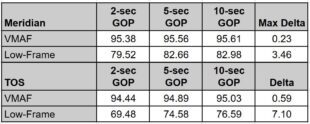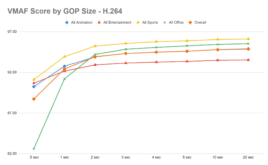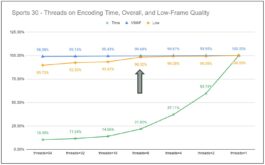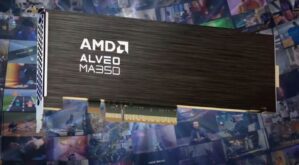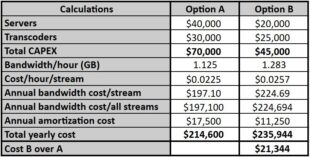In a recent white paper titled Bi-Directional Deep Contextual Video Compression (DCVC-B), researchers Xihua Sheng, Li Li, Dong Liu, and Shiqi Wang proposed a new approach to enhancing B-frame compression for video encoding. The authors assert that their scheme “achieves an average reduction of 26.6% in BD-Rate compared to the reference software for H.265/HEVC under random access conditions” and even …
Read More »M3-CVC: A Glimpse into the Future of AI-Driven Video Compression
A new AI-based codec proved 18% more efficient than VVC but substantial decoding requirements will limit short-term commercial application. Here’s a summary of the white paper. In December 2024, researchers from Fudan University introduced M3-CVC, an AI-based video compression framework that combines large multimodal models (LMMs) for semantic understanding and conditional diffusion models (CDMs) for high-fidelity reconstruction. The framework employs …
Read More »Comparing Fixed GOPs to Variable GOPs with I-Frames at Scene Changes
I first encountered the line, “Anything worth doing is worth overdoing,” in the Robert Heinlein novel Time Enough for Love. I bring this up because this is my third recent article on GOP size, and I think I’m close to beating this topic into the ground. I’ll let you be the judge. To recount, I reported on testing in an …
Read More »Real-World Perspectives on Choosing the Optimal GOP Size
One of the most fundamental encoding decisions is the size of the Group of Pictures (GOP) or the frequency of I-frames within an encoded file. I-frames, also known as keyframes, are the starting points for groups of pictures, consisting of I-, B-, and P-frames. Traditionally, the GOP size is directed by adaptive bitrate streaming considerations, such as ensuring an I-frame …
Read More »Three Things to Know About 2-Pass x265 Encoding
Here are three things to know about 2-pass x265 encoding with FFmpeg. If you’re using -pass 1 and -pass 2 in your command string, it’s probably not working. You must use x265-params 0:pass=1 and then x265-params 0:pass=2 in the second pass. In the way we absolutely love about FFmpeg, there’s no error message if you use -pass 1/-pass 2; it …
Read More »What’s the Best Setting for x265 Two-Pass Encoding?
I’m running some 1-pass vs. 2-pass comparison testing with x265. Unlike with x264 (see tests here), there’s a substantial performance penalty for running 2-pass with minimal quality benefit. I tried the no-slow-firstpass=1 setting, which only accelerated two-pass by about 14%. Here are the results from a single test file. I don’t want to process them all if there’s a magic …
Read More »How Thread Count Impacts Video Encoding Quality, Throughput, and Cost
Learn how thread count impacts video quality, encoding speed, and costs in FFmpeg workflows. Master configurations for optimal production and testing results.
Read More »Mac Video Apps for Streaming Professionals
Though I work primarily on Windows computers, I also have several Macs. Here are the Mac video Apps I use on them and other Mac tools you should consider. Free or Almost Free MediaInfo ($0.99) Platform: Mac, Windows, Linux Description: MediaInfo is an essential tool that displays technical and tag data for video and audio files. Free and cross-platform, this …
Read More »Announcing Free Course on Controlling the AMD MA35D with FFmpeg
I’m pleased to announce a new free course, MA35D & FFmpeg Quick Start: Essential Skills and Expert Tips. As the title suggests, the course will get you up and running quickly and help you configure the MA35D for optimal throughput and quality for your application. The first few lessons describe how to access the MA35D’s hardware options for decoding, encoding, …
Read More »Choosing the Best Preset for Live Transcoding
When choosing a preset for VOD transcoding, it almost always makes sense to use the highest-quality preset, because any increase in encoding costs will typically be recouped via bandwidth savings delivered by the more efficient encoding. I covered that analysis in detail here. Note that this conclusion assumes that you deliver at a certain quality level and will boost the …
Read More » Streaming Learning Center Where Streaming Professionals Learn to Excel
Streaming Learning Center Where Streaming Professionals Learn to Excel

